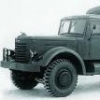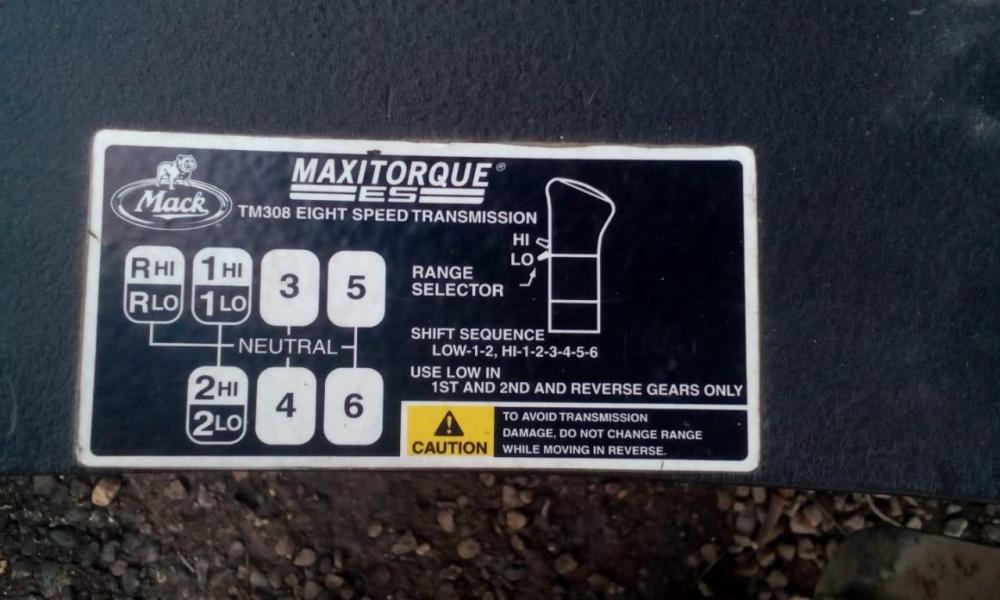-
Posts
7,950 -
Joined
-
Last visited
-
Days Won
78
Content Type
Profiles
Forums
Gallery
Events
Blogs
BMT Wiki
Collections
Store
Everything posted by Vladislav
-

74 Mack Rmodel Project
Vladislav replied to JBushneck's topic in Antique and Classic Mack Trucks General Discussion
Nice looking truck and interesting configuration. Would be cool to see in progress pics. -
Good job! To me it doesn't look to fire right up with a set of fresh batteries. More looks like parked at that spot for a while. But probably was kept inside for many years in the past. Would be interesting to know how the frame rails are perfect.
-

Engine rebuild on a '53 B-61T: END673
Vladislav replied to Keith S's topic in Engine and Transmission
My guess (again a guess) END-673 had dry liners of tighter fit than Maxidynes so you need a strong puller to remove them. Not like E6/EM6 OEM or PAI you have sometimes them off the block just turning the crank a little bit. And put back in new ones by hand (after keeping in a fridge overnight). END's didn't have separate firerings, just integrated in the gasket ones, like in car. That same (as it looks now) for head studs. They were thinner in pre-Maxidyne engines. Again, I have no experience with END-673 but I rebuilt my ED-519 Lanova which also had similar overall design to all END/E -series. Actually the very predicessor to them all. The crank and rods were much lighter than in E6 along with lesser OD journals etc. Dry liners I used a 20 ton press to get off the block, no firerings. If the memory serves good my ED-519 had even lesser journals than 673 but I didn't have need to check that out. There was a big thread on here about Maxidyne engines a couple or so years back. Unfortunately I don't remember its title. Glenn Ackers put the most of points in it. I asked question on how those new engines being basically the old 673 could provide much higher torque and even at low revs. His answer was the basic design was seriousely reworked with more massive crank/rods, reinforcement plates over main bearing bolts and other mods. Glenn looked knowing that matter like a palm of his hand. But too unfortunately he's no longer with us anymore. -

Engine rebuild on a '53 B-61T: END673
Vladislav replied to Keith S's topic in Engine and Transmission
I may be wrong (never dealt with END673 by my hands) but what I figured out from the forum Mack made a major step redoing 673 into Maxidyne family. Those were called ETAZ-675 or so and further on and I belive started calling E6 and EM6 at a certain time. The matter I mention that is Maxidyne engines got newer more massive crank shaft and rods with reinforcements in the block too. Those parts differ from END-673, 711 and other older engines. E6/EM6 have removable liners you can purchase from PAI or other suppliers and they have an edge circle over the top to press into steel firerings to seal against the heads. Heads have recesses corresponding the edges at each cylinder. What is important all those parts are avalible and if older 673 have different liners, bearings, gaskets etc the overhaul may be found troubleful. What I have on my mind is checking out on purchasing some old EM6 and use it as a basis for overhaul. Those engines look very similar to 673 at the outside and the most mating spots are similar. I mean the oil pan, front cover, etc. Sure every spot should be checked out for that but in general both engines have plenty of similarities. I don't declare it as the way to go. But a possible option. First it worth to check out possibility of purchasing parts for 673 and having the value you may look for alternatives. My guess is buying a complete engine for parts wouldn't be a big offset in cost from the cost of all new parts. And as long as your engine is already not original to the truck you don't loose truck's originality much. -
Thanks Brocky. Me too. I hope for the things to go a better way in our world.
-
This truck could be made to transport barrels originally. Or maybe gas set indeed. I have two tanks in my shop but limit myself with oxigen and propane tanks. I newer trained for gas welding and was told just heating with propane is less dangerous than use of acetylene. Maybe too much of to worry about but propane is quite fine to heat up some too rusty bolt or nut.
-
Great to hear from Zina! I had been keeping her in mind yesterday, thinking of did she knew you invited that decoration crew. Sure kidding. I keep her in mind every time I remember you. It was really nice to meet in person at Macungie, no matter quite a while passed since. Thanks for wanting me seen in your neighbourhood. I keep hopes for more travels to the US of A in the future but right at the time doubts prevail. Let's see and let's hope we will live long enough to enjoy doing cool thing. Happy upcoming New 2024! To Zina and to you Tom.
-
Good job on the stew! Like the dogs. The red one, the green one, the tan one and the brown one. Oh, and you didn't mention how many quarts you gave for having the Santa crew decorating your house.
-
Merry X-mas and happy holiday season BMT!
-
It looks quite good indeed. At least on my mind and on the pictures.
-
Too sorry to hear. I always liked to read his posts. Rest In Peace Seed.
-

Tracked Down An Air Leak, Need Help ID'ing Part
Vladislav replied to Grind's topic in Air Systems and Brakes
In my case it looked like the setup was determined by the vendor of the front axle. From pics on Truckpaper I got figured some DMM's had air brakes at the front. -

Tracked Down An Air Leak, Need Help ID'ing Part
Vladislav replied to Grind's topic in Air Systems and Brakes
I have that similar setup on my 6x6 DMM chassis. Or more correctly to say, restovers of it. Exactly as JoeH explained. DMM has hydraulic brakes on the front axle. And that thingy (that old airbrake chamber) used to activate the master cylinder for sypplying juice to the calipers. -

Vintage MT pinion side cover
Vladislav replied to mrbigtrucks's topic in Antique and Classic Mack Trucks General Discussion
These were used still in 40's. Or particulary I have such ones on my 1945 NR-model. But looks like they could be installed on the most any CRD92/93 series carriers. Look nice but the spot they're at is difficult to see when in a truck. -
Like to the post and sad to your knees at the same time. Wish you well.
-
There was a topic a long while back (10 years or so) with a guy having a E9 and showing oily or tar spot over one of the exhaust ports on one of the heads. Or maybe over a few of them. As I remember the conclusion of the crowd was too long idle could make that effect and the excessive oil (unburned fuel) would go off after some good run. If no satisfection with such cheer up I would bench test injectors and injection angle and also look for engine oil consumption in some long time frame.
-

Can anyone identify this Mack Diesel engine
Vladislav replied to screwylouie010's topic in Engine and Transmission
A rare bird definitely. Also interesting camera work in this video. -

1985 Superliner
Vladislav replied to Supermutt's topic in Antique and Classic Mack Trucks General Discussion
Western aluminium frames for RL600/700 were solid straight channels front to rear. Western Superliner and Cruiseliner had front portion of the frame stamped of steel and it was bolted to the rear straight portion near rear engine mounts no matter the rear rails were steel or alu. 2nd generation Superliners and Ultraliners had fashioned front portion of the frame rails. If they're all steel the rails were solid just with that fashioned design over the engine bay. If alu the front portion was steel with all that "fashion" down to the front fuel tank brackets nearly and furthermore straight alu rails went all the way to the rear. I was very surprized (and dissappointed) when found out those were done that way. But that's what Mack made in the factory. -
T2060, T2070 and T2080 all had 0.60 overdrive in the main box. 0.71 is for T2090. 6 speed single stick model was T2060A. Mack engeneers made gears in the main box narrower and could suit 6 in there instead of the common 5. Revers was also in its place in the main box. OD was 0.714. There's also similar model in T300 series but the one I'm familiar with is even T308 eight speed. Possibly 6 and 7-speed versions also existed.
-

B-73 Restoration
Vladislav replied to mattb73lt's topic in Antique and Classic Mack Trucks General Discussion
Thanks for the pictures and for sharing all the job which no doubt brang lots of inspiration and was a pleasure to read. Many of us could feel as if that was happining with our own trucks. I mean when you met a trouble and was looking for a solution some others also spinned ideas on how would they solve similar issue. So your project shared plenty of emotions much earlier when it turned into a running truck people can enjoy watching. The pic above is a perfect wallpaper image on my mind and the Christmass photo is absolutely amazing. -

1985 Mack MH613 cabover
Vladislav replied to JMetz's topic in Antique and Classic Mack Trucks General Discussion
That bracket you have on your truck is almost correct base for the bulldog mascote. Stock part for the MH-model. You just bought a wrong dog as other members mentioned above. I saw such the base for sale on Ebay a couple years ago and thought I saved its pic on my hard drive. Rifled through it yesterday trying to answer your question but haven't found any. And now I see you added a photo of what you have on your truck and that's exactly what I have on my MH. -
If using for hobby the bogie could be moved into its original location with not much labour and the look of the truck would be even more attractive. But definitely more shaky, especially with those heavy rears. Just my thoughts or maybe my general approach
-
Nice looking old R-model indeed. Would be a nice addition to someone's stable if the bid doesn't go sky high. As of the chassis the story was (as I can see) the truck had shorter wheelbase in its younger times. Than somebody moved the bogie to get more of WB. You can see a set of holes from the original location of the trunnion bracket (the elephant ears) in the green circle. Also four old holes for attaching the trunnion between the "ears" are seen to the left of the circle. When the bogie was moved the guy added the rear portion using just what he found in a corner of his yard I guess.
-

Stretching R model hood
Vladislav replied to SpreadingLime's topic in Exterior, Cab, Accessories and Detailing
Yes, wondering and figuring is the way to new. If the mankind were only duplicating we would still use wariations of stones, not trucks, smartphones etc. One more aspect floated up in my mind when I typed the above yesterday was the angle the hood sides go from the cowl to the nose. The cowl width is the same and the nose area is too probably equal wide between R600 and R700. If so the angle between hood sides of R700 is sharper. And if you add extension at the cowl its sides should be parallel, not the same surface as the R600 hood side. I just didn't type that originally, there was enogh for that post.
BigMackTrucks.com
BigMackTrucks.com is a support forum for antique, classic and modern Mack Trucks! The forum is owned and maintained by Watt's Truck Center, Inc. an independent, full service Mack dealer. The forums are not affiliated with Mack Trucks, Inc.
Our Vendors and Advertisers
Thank you for your support!








.thumb.jpg.aa9bb5551773beac8be5f12bd511dacc.jpg)
